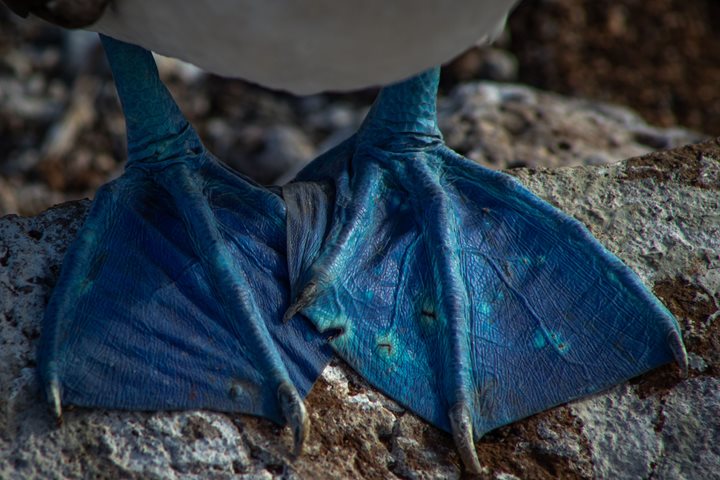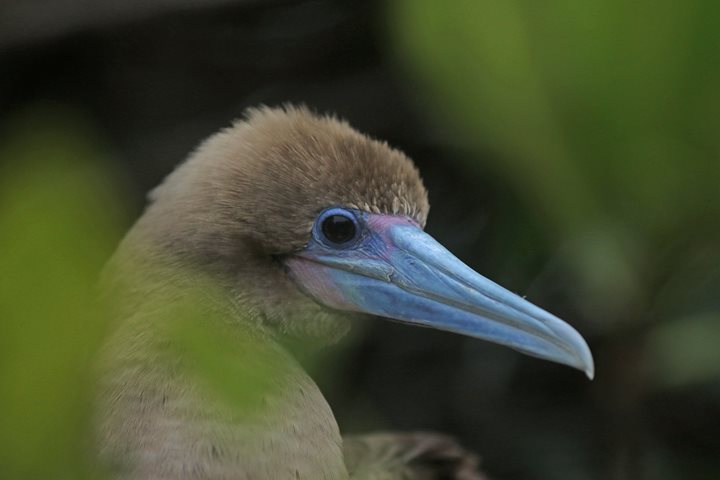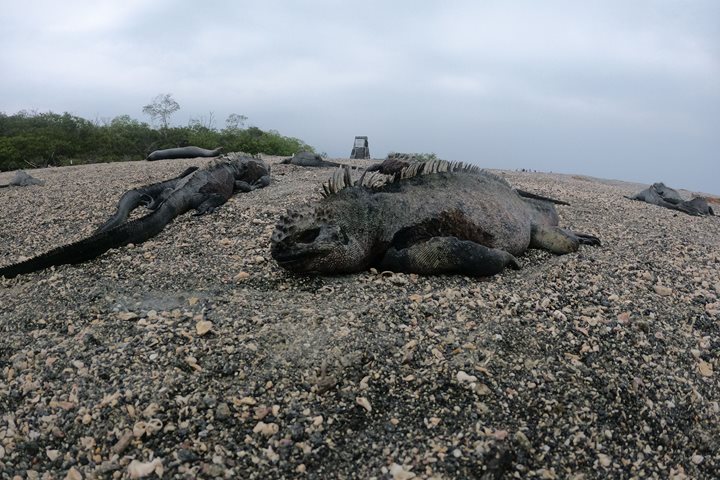We anchored off the coast of Santiago Island with a wonderful view of a young lava field. Right in front of this barren lava field is a shield volcano with lava flows around it. This place is known as Sombrero Chino, or “Chinese Hat.” In addition to its peculiar shape, it is surrounded by green halophyte plants along the coastline.
After breakfast we explored the area using our dependable Zodiac fleet. The Zodiac ride was a very successful one and we had the chance to cover a long distance admiring the striking volcanic landscape and looking for wildlife. Galapagos penguins, several heron species, marine iguanas and sea lions were admired and photographed. The majestic candelabra cacti were also seen behind the Galapagos penguins (this was a pretty odd photograph, as these two species are usually found in completely different climates). Before we returned to the ship we had a very curious marine iguana jump onto the bow of our Zodiac for a free ride with us around the coast. After giving us quite a show, it decided to jump back onto the black lava.
Once onboard we put on our snorkeling gear to continue exploring the area but this time underwater. The sun was shining and the waters were crystal clear, meaning that the underwater world in this exotic location was as its best today. We had great wildlife sightings, such as Galapagos penguins swimming swiftly, sea lions fishing, and several white-tip reef sharks among many colorful species of tropical fish.
At lunch time, the ship repositioned to the south of Santiago Island, the fourth largest islands of the Galapagos archipelago. On our way to Santiago Island we sailed near Bainbridge Rocks to spot from a distance some greater flamingos in a saltwater lake inside a crater.
In the late afternoon after a very interesting talk about Charles Darwin, we disembarked at Sullivan Bay for an unforgettable hike on fairly recent lava flow. The lava we observed today is believed to be about 117 years old. It came from an eruption witnessed as recently as 1897. Most of the hike was over smooth “pahoe-hoe” lava. This was like traveling millions of years back in time to see how the Galapagos were before the islands got a full ecosystem established.







